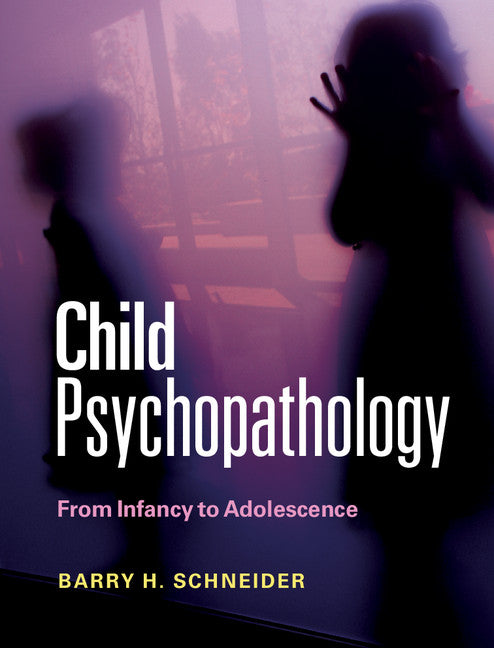Freshly Printed - allow 6 days lead
Couldn't load pickup availability
Child Psychopathology
From Infancy to Adolescence
This textbook provides authoritative and up-to-date coverage of the classification, causes, treatment and prevention of psychological disorders in children.
Barry H. Schneider (Author)
9780521152112, Cambridge University Press
Paperback, published 4 December 2014
668 pages, 56 b/w illus. 13 tables
24.6 x 19 x 3 cm, 1.42 kg
'This well-balanced presentation of the empirical science and clinical practice of child psychopathology is much needed. Dr Schneider and colleagues present very readable, seamlessly clear explanations of complex concepts at a sophisticated yet accessible level. The material is very up to date, with balanced, sophisticated coverage of fundamental developmental psychopathological processes. The writing is entertainingly precise, the views refreshingly constructive, and basic concepts are presented in a stimulating and readable way.' Anna Beth Doyle, Distinguished Professor Emeritus of Psychology, Concordia University, Montréal
This textbook covers the classification, causes, treatment and prevention of psychological disorders in the infant through the adolescent years. Chapters balance the social and historical context of psychopathology with the physiological roots of abnormal behavior, leading students to a comprehensive understanding of child psychopathology. The book is totally up-to-date, including coverage of the DSM-5 and criticisms of it. In four parts, this textbook describes the empirical bases of child psychopathology as well as the practice of child psychologists, outlining the classification and causes of disorders in addition to methods of assessment, intervention and treatment. Students will be able to evaluate the treatments used by professionals and debunk popular myths about atypical behavior and its treatment. Complementing the lively writing style, text boxes, clinical case studies and numerous examples from international cultures and countries add context to chapter material. Study questions, diagrams and a glossary offer further learning support.
Part I. Basic Concepts and Processes: 1. Normality and abnormality in the context of human development: basic definitions
2. History: from ancient wisdom to the behavioral and cognitive revolutions
3. Classification of children's psychological problems: pseudoscience or fundamental part of the helping process?
4. Genetics and psychopathology Mara Brendgen
5. The physiological underpinnings of child psychopathology Paul Hastings and Amanda Guyer
6. Family influences, family consequences and family interventions
7. The helpful and harmful influences of peers, friends and siblings
8. Cultural dimensions of child psychopathology
9. Psychological assessment as part of the caring process
10. Prevention and mental health promotion with Eli Cwinn
11. Psychological interventions with children and adolescents: basic concepts
Part II. High-Incidence Disorders: 12. Disruptive behavior disorders
13. Depression
14. Attention deficit/hyperactivity disorder
15. Anxiety disorders
Part III. Developmental Disorders: 16. Intellectual disability
17. Autism spectrum disorders
18. Dyslexia and other learning problems as child psychopathology
Part IV. Less Frequent Forms of Child Psychopathology: 19. Eating disorders
20. Bipolar disorder in childhood and adolescence: a modern-day epidemic?
21. Substance use disorders
22. School refusal
23. Post-traumatic stress disorder
24. Gender dysphoria in children: or, what is psychopathology? with Eli Cwinn.
Subject Areas: Clinical psychology [MMJ], Psychiatry [MMH], Child & developmental psychology [JMC], Psychology [JM]


